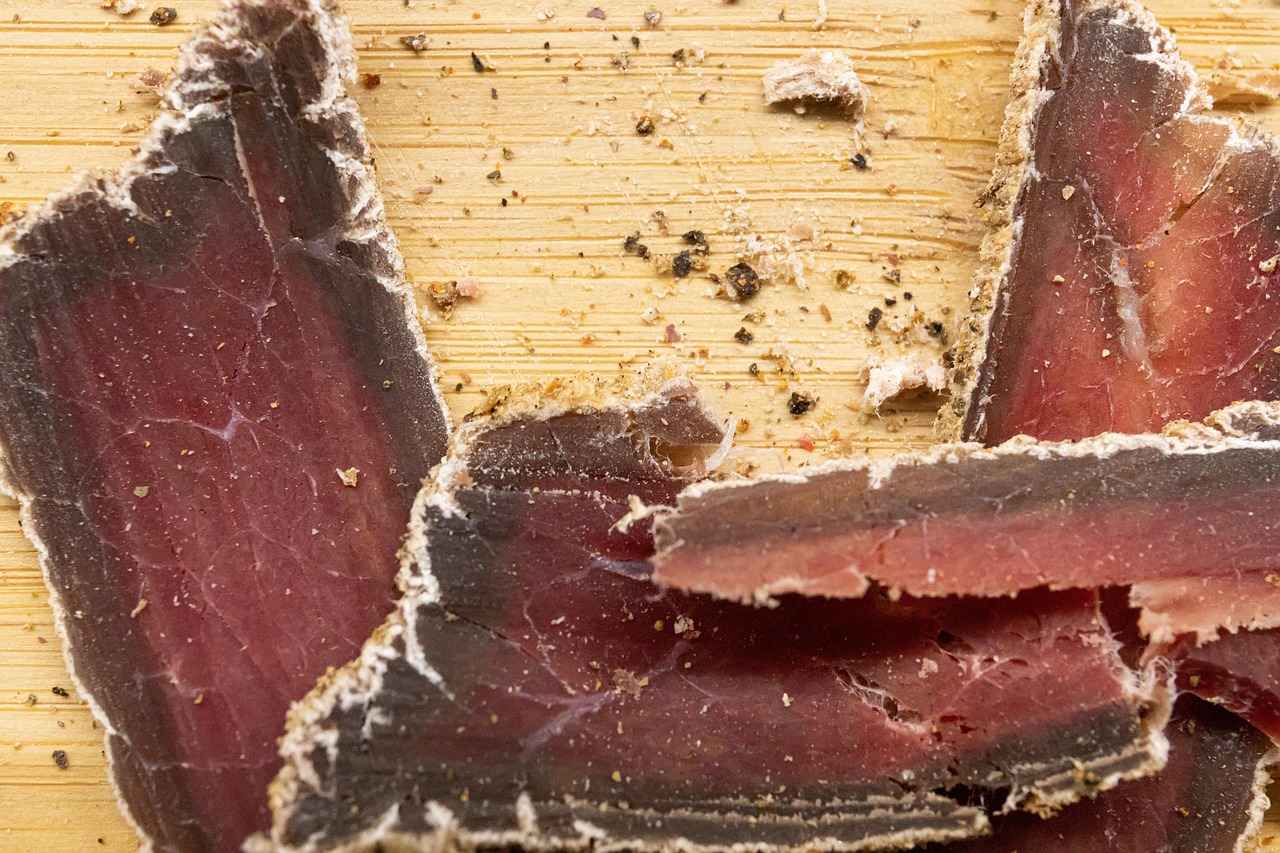This article delves into the precise timing required for dehydrating jerky at 160°F. Achieving the perfect texture while retaining flavor and ensuring safety is crucial for every jerky enthusiast. In this guide, you will uncover expert tips and detailed insights into the jerky dehydration process.
Understanding Jerky Dehydration
Dehydrating jerky is an age-old method of preserving meat by removing moisture, which inhibits the growth of bacteria and other microorganisms. The process involves applying low heat over a prolonged period, allowing the moisture to evaporate while concentrating the meat’s flavors. Understanding the science behind dehydration helps in achieving the ideal jerky texture. The goal is to create a chewy, yet tender product that is safe to consume.
Importance of Temperature Control in Dehydration
Maintaining the correct temperature is vital for both food safety and texture. At 160°F, the meat reaches a temperature that effectively kills harmful bacteria, ensuring the jerky is safe to eat. This temperature also facilitates even drying, which is essential for achieving that sought-after texture. Any fluctuations in temperature can lead to uneven drying and potentially unsafe jerky.
Choosing the Right Meat for Jerky
The selection of meat significantly impacts the final product. Popular choices include beef, turkey, and venison. Each type of meat has unique characteristics that affect the flavor and texture of the jerky. For instance, beef is the most common due to its robust flavor, while turkey offers a leaner option. Understanding the properties of different meats can help you make an informed choice for your jerky-making process.
Preparing Meat for Dehydration
Proper preparation of meat is crucial for enhancing flavor and texture. Start by trimming excess fat, as fat does not dehydrate well and can lead to rancidity. Next, slice the meat into uniform pieces, ideally around 1/4 inch thick, to ensure even drying. Marinating the meat is also an essential step, as it infuses flavor and can help tenderize the jerky.
Marinating Techniques for Flavorful Jerky
Marinades can elevate the flavor profile of your jerky significantly. A basic marinade might include soy sauce, Worcestershire sauce, and various spices. Allow the meat to marinate for at least 4 to 12 hours, depending on the intensity of flavor you desire. Experimenting with different ingredients can lead to unique and delicious combinations that will make your jerky stand out.
Setting Up Your Dehydrator
To achieve optimal results, setting up your dehydrator properly is essential. Ensure that the trays are spaced adequately to allow for proper air circulation. Avoid overcrowding the dehydrator, as this can lead to uneven drying. Preheat the dehydrator to 160°F before placing the meat inside to ensure that it begins the drying process at the correct temperature.
How Long to Dehydrate Jerky at 160°F
The dehydration time at 160°F varies based on the thickness and type of meat. Generally, you should aim for a dehydration time of 4 to 6 hours. Thicker pieces may require additional time, while thinner slices could be done in as little as 3 hours. Regularly check the jerky for doneness by bending it; it should crack but not break.
Signs Your Jerky is Done
Knowing when your jerky is adequately dehydrated is crucial. Look for a leathery texture that bends without breaking. If the jerky snaps when bent, it may be overdone. Additionally, there should be no visible moisture or stickiness. Trust your instincts and check periodically during the drying process to ensure you achieve the perfect texture.
Storage Tips for Dehydrated Jerky
Proper storage is key to extending the shelf life of your jerky. Store it in an airtight container in a cool, dark place. For longer shelf life, consider vacuum sealing the jerky, which can keep it fresh for several months. Always label your containers with the date of preparation to keep track of freshness.
Common Mistakes to Avoid When Dehydrating Jerky
Common pitfalls can derail your jerky-making experience. One frequent mistake is not adequately marinating the meat, which can lead to bland flavor. Additionally, overcrowding the dehydrator can result in uneven drying. Always monitor the temperature and time closely to avoid over-drying or under-drying your jerky.
Health and Safety Considerations
Food safety is paramount when making jerky. Always handle meat with clean hands and tools to prevent contamination. Ensure that the meat reaches 160°F to eliminate harmful bacteria. By following safe handling practices, you can enjoy delicious jerky while minimizing health risks.
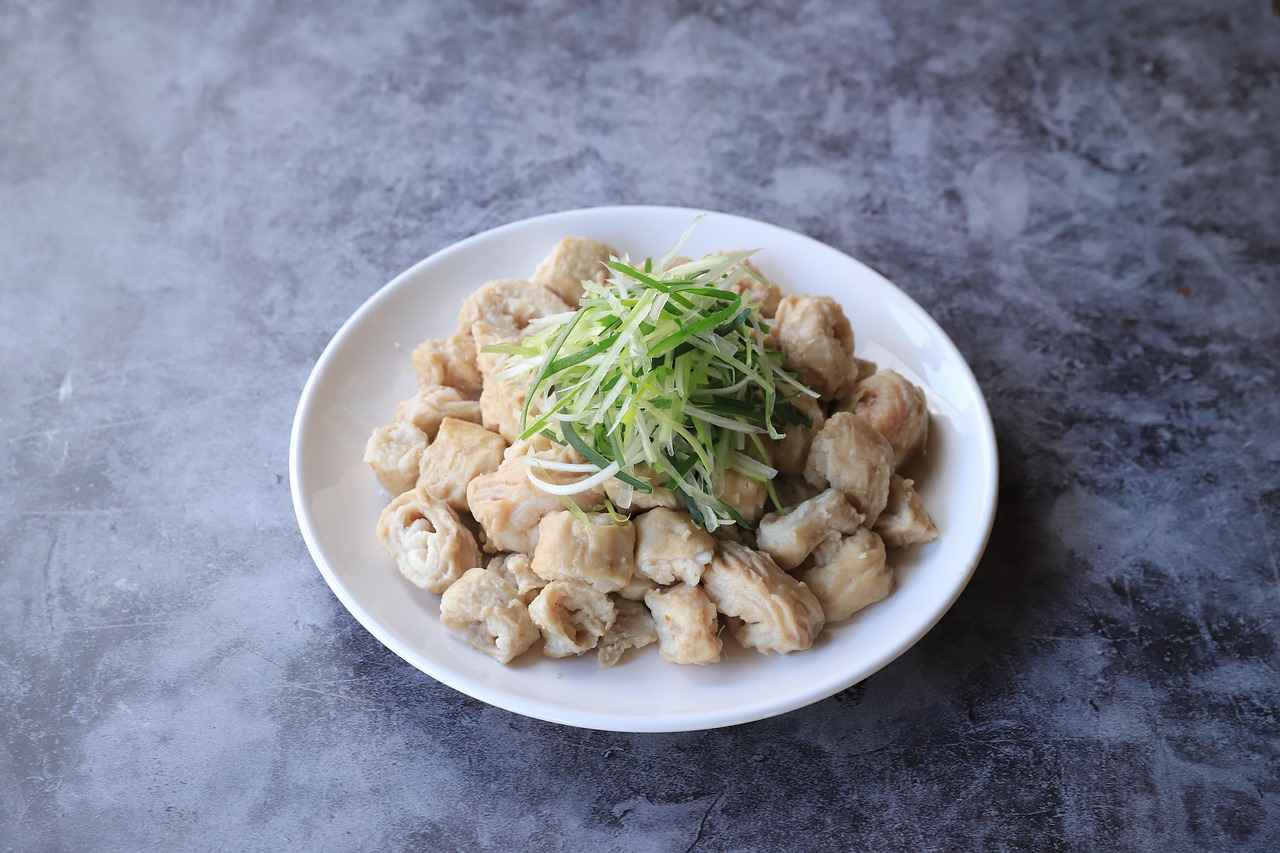
Understanding Jerky Dehydration
Dehydrating jerky is a time-honored method of preserving meat that dates back centuries. By removing moisture, the process not only extends the shelf life of the meat but also enhances its flavor and texture. Understanding the science behind dehydration is essential for anyone looking to create the perfect jerky.
The primary mechanism of dehydration involves moisture removal, which inhibits the growth of bacteria, molds, and yeasts that can spoil food. When meat is dehydrated, it loses approximately 90% of its moisture content. This significant reduction in moisture creates an environment that is hostile to microbial growth, thereby ensuring that the jerky remains safe for consumption over extended periods.
One of the key factors in achieving the ideal jerky texture is the temperature at which dehydration occurs. Maintaining a consistent temperature, typically around 160°F (71°C), is crucial. This temperature not only helps to evaporate the moisture effectively but also ensures that the meat reaches a safe internal temperature, which is vital for killing any potential pathogens. The Maillard reaction, which occurs at higher temperatures, also contributes to the development of rich flavors and a desirable color in the jerky.
In addition to temperature, the thickness of the meat slices plays a significant role in the dehydration process. Thicker slices will require more time to dehydrate fully, while thinner slices will dry out faster. As a general rule, slices should be uniform in thickness, ideally around 1/4 inch, to ensure even drying. This uniformity helps prevent some pieces from becoming over-dried or under-dried, contributing to a consistent texture throughout the batch.
The texture of jerky is another critical aspect that many enthusiasts strive to perfect. A well-dehydrated jerky should be firm yet pliable, allowing it to bend without breaking. Over-dehydration can lead to a brittle product that is difficult to chew, while under-dehydration may result in a chewy, unsafe product. Thus, understanding the signs of proper dehydration is essential for achieving the desired texture.
In summary, the science of jerky dehydration revolves around moisture removal, temperature control, and slice thickness. By mastering these elements, you can create jerky that is not only safe to eat but also delicious and enjoyable. Whether you are a novice or an experienced jerky maker, grasping the fundamentals of dehydration will significantly enhance your jerky-making skills.
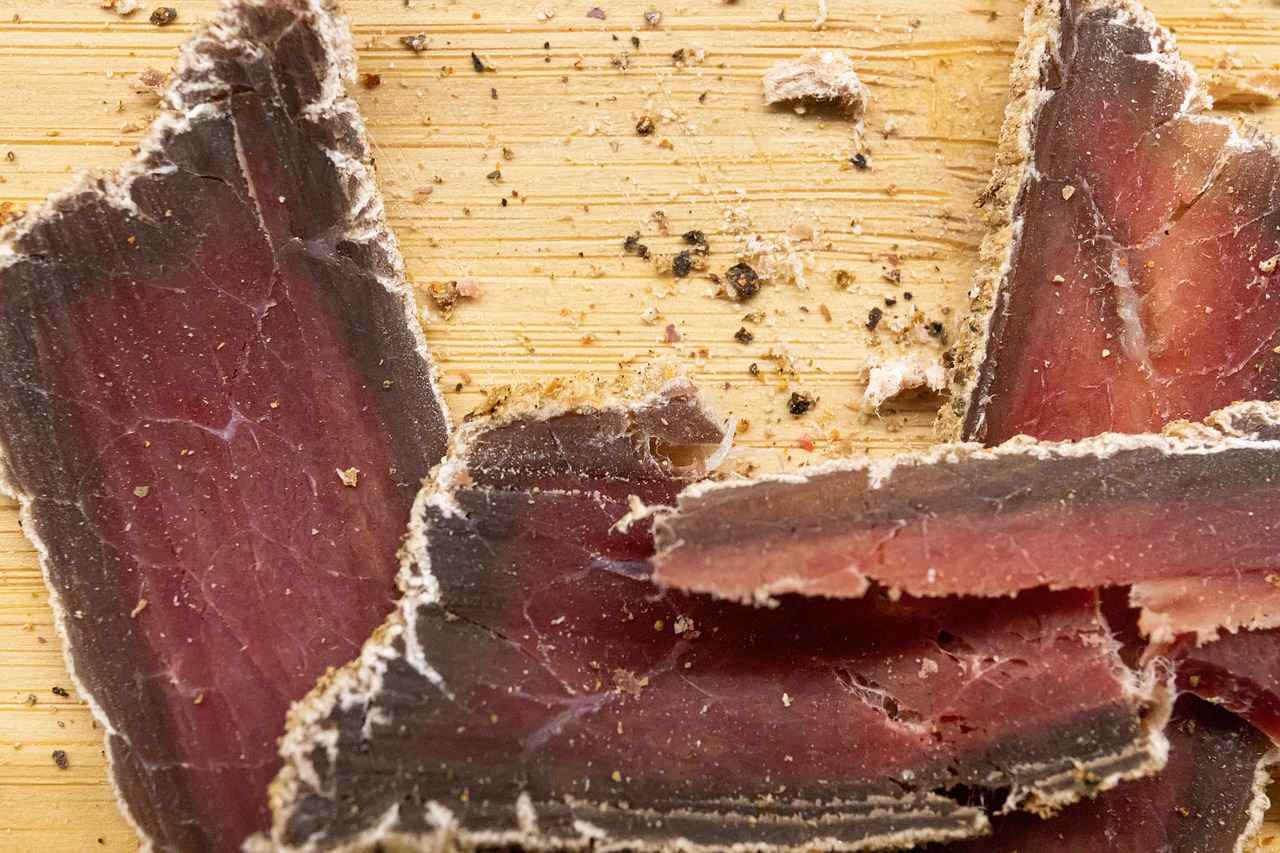
Importance of Temperature Control in Dehydration
When it comes to making jerky, temperature control is not just a matter of preference; it’s a critical factor that influences both food safety and the overall quality of the final product. The process of dehydration involves removing moisture from meat, which inhibits the growth of bacteria and molds. However, if the temperature is not adequately regulated, the risks associated with foodborne pathogens can increase significantly.
Maintaining a consistent temperature of 160°F during the dehydration process is essential for several reasons:
- Food Safety: At 160°F, harmful bacteria such as Salmonella and E. coli are effectively killed. This temperature is crucial for ensuring that the meat is safe to consume, especially since jerky is often stored for extended periods.
- Texture Preservation: Dehydrating at this optimal temperature helps in achieving the desired chewy texture without overcooking the meat. Higher temperatures can lead to a tough, undesirable product.
- Flavor Retention: Keeping the temperature steady helps in preserving the natural flavors of the meat. Fluctuations can lead to uneven drying, affecting both taste and texture.
In addition to safety and quality, temperature control also plays a role in the efficiency of the dehydration process. When the temperature is set correctly, the moisture is removed at an optimal rate, allowing for a more uniform drying experience. This means that not only will the jerky be safer and tastier, but it will also be ready more quickly, which is particularly beneficial when preparing larger batches.
To ensure that you maintain the correct temperature throughout the dehydration process, consider the following tips:
- Use a Reliable Thermometer: Invest in a good-quality thermometer to monitor the internal temperature of your dehydrator.
- Check for Hot Spots: Some dehydrators may have uneven heating. Rotate trays or adjust the placement of meat to ensure even drying.
- Follow Manufacturer Guidelines: Always adhere to the recommendations provided by your dehydrator’s manufacturer regarding temperature settings and drying times.
In summary, the importance of temperature control during the dehydration of jerky cannot be overstated. By maintaining a consistent temperature of 160°F, you ensure that your jerky is not only safe to eat but also delicious and of high quality. Whether you are a novice or an experienced jerky maker, understanding and implementing proper temperature management will lead to better results every time.

Choosing the Right Meat for Jerky
When it comes to making delicious jerky, selecting the right meat is crucial. The choice of meat not only influences the flavor but also affects the texture and overall quality of the final product. In this section, we will explore the best types of meat to use for jerky, their unique characteristics, and how these factors contribute to achieving the perfect jerky.
There are several types of meat that are ideal for making jerky, each offering distinct flavors and textures:
- Beef: The most common choice for jerky, beef is favored for its rich flavor and chewy texture. Cuts like top round, bottom round, and flank steak are lean and perfect for jerky.
- Pork: Pork jerky has a slightly sweeter taste. Cuts like pork loin or shoulder can be used, but it’s essential to trim excess fat to prevent spoilage.
- Poultry: Chicken and turkey are excellent low-fat options. Using breast meat ensures a leaner jerky, but it can dry out quickly if not monitored.
- Game Meats: Venison, elk, and bison offer unique flavors that can elevate your jerky experience. These meats are typically leaner than beef, making them a healthier option.
When choosing meat for jerky, consider the following characteristics:
- Fat Content: Lean cuts are preferable as fat can lead to spoilage. Aim for meat with less than 10% fat.
- Texture: Different cuts have varying textures. For example, flank steak is naturally tougher, giving jerky a satisfying chew, while chicken breast can become too dry if not dehydrated properly.
- Flavor Profile: The inherent flavor of the meat will influence the final taste of the jerky. Consider how the meat will pair with your marinade and spices.
Once you have selected your meat, proper preparation is essential. Trim away any visible fat and sinew, as these can affect the jerky’s shelf life. Slice the meat into uniform pieces, ideally about 1/4 inch thick, to ensure even dehydration. Marinating the meat enhances flavor and tenderness, allowing the spices to penetrate deeply.
In conclusion, choosing the right meat is a fundamental step in the jerky-making process. By selecting lean cuts and understanding the characteristics that impact flavor and texture, you can create jerky that is not only delicious but also safe and long-lasting. Whether you opt for traditional beef or venture into game meats, the right choice will set the foundation for a successful jerky experience.
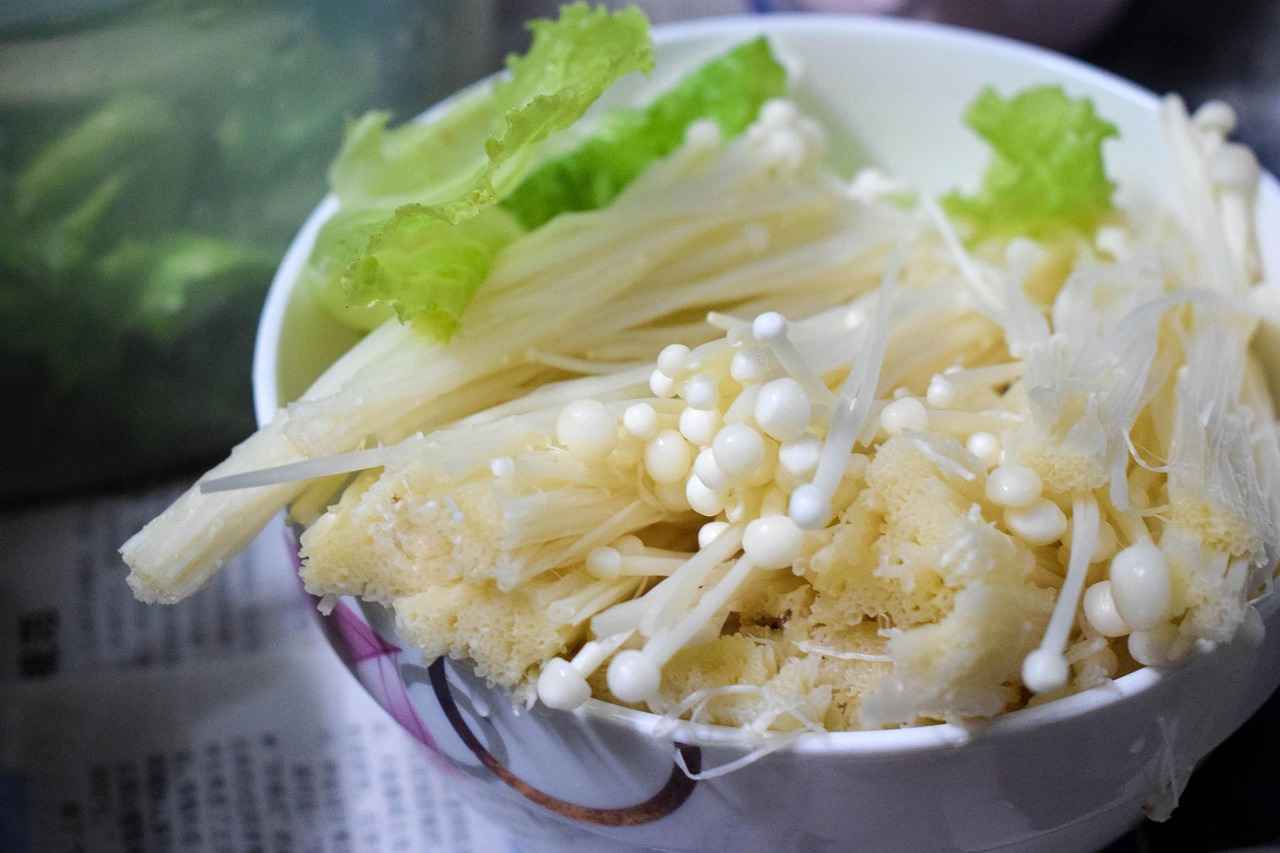
Preparing Meat for Dehydration
Proper preparation of meat is crucial for achieving the best flavor and texture in your jerky. The process involves several essential steps that lay the groundwork for a delicious final product. In this section, we will explore the key techniques, including trimming, slicing, and marinating, that will enhance your jerky-making experience.
- Trimming the Meat: Start by selecting high-quality meat, such as beef, turkey, or venison. Trim away any visible fat, as fat does not dehydrate well and can lead to spoilage. Use a sharp knife to remove silverskin, which is a tough connective tissue that can affect the texture of your jerky.
- Slicing for Consistency: Slice the meat into uniform pieces, ideally about 1/4 inch thick. Consistent thickness ensures even drying, preventing some pieces from becoming over-dried while others remain chewy. For best results, freeze the meat for about 1-2 hours before slicing; this firms it up and makes it easier to cut.
- Marinating for Flavor: Marinating is a vital step that infuses the meat with flavor. Create a marinade using ingredients such as soy sauce, Worcestershire sauce, garlic powder, and various spices. Let the meat soak in the marinade for at least 4-12 hours in the refrigerator, depending on your flavor preference. The longer the meat marinates, the more intense the flavor will be.
- Drying Preparation: After marinating, remove the meat from the marinade and pat it dry with paper towels. This step is crucial as it helps achieve a better texture during the dehydration process. Excess moisture can lead to uneven drying and affect the overall quality of the jerky.
By following these essential steps, you set a solid foundation for your jerky. Each stage, from trimming to marinating, plays a significant role in enhancing the overall flavor and texture of the final product. Remember, the quality of your jerky starts with the preparation of the meat, so take your time and enjoy the process!
In summary, preparing meat for dehydration is more than just a step in the jerky-making process; it’s an art that requires attention to detail. With the right techniques, you can create jerky that is not only safe to eat but also bursting with flavor and satisfying to chew.

Marinating Techniques for Flavorful Jerky
Marinating is a crucial step in creating flavorful jerky. By soaking the meat in a mixture of seasonings, acids, and oils, you can significantly enhance the overall taste and tenderness of your jerky. This section will explore various marinade recipes, the science behind marinating, and tips on how long to marinate for the best results.
Why Marinate Jerky? Marinating not only infuses the meat with flavor but also helps to tenderize it. The acids in marinades, such as vinegar or citrus juice, break down proteins, allowing the flavors to penetrate deeply. Additionally, a good marinade can add moisture, which is essential for achieving the right texture after dehydration.
Basic Marinade Ingredients A well-balanced marinade typically includes:
- Acid: Vinegar, citrus juice, or yogurt to tenderize the meat.
- Oil: Olive oil or sesame oil to help with flavor absorption.
- Flavorings: Soy sauce, Worcestershire sauce, garlic, onion powder, and spices for depth of flavor.
- Sweeteners: Brown sugar or honey to balance acidity and add a caramelized finish.
Popular Marinade Recipes
- Teriyaki Marinade: Combine soy sauce, brown sugar, garlic, and ginger for a sweet and savory profile.
- Spicy Marinade: Use hot sauce, cayenne pepper, and black pepper for a fiery kick.
- Herb Marinade: Mix olive oil, lemon juice, rosemary, thyme, and garlic for a fresh, aromatic flavor.
How Long Should You Marinate Jerky? The marinating time can vary based on the thickness of the meat and the strength of the marinade. As a general guideline:
- Thin Cuts: 2-4 hours for optimal flavor absorption.
- Thicker Cuts: 6-12 hours, or even overnight, to allow deeper penetration of flavors.
Tips for Effective Marinating
- Use a Non-Reactive Container: Glass or plastic containers are best to avoid reactions with acidic ingredients.
- Turn the Meat: If marinating for an extended period, turn the meat halfway through to ensure even flavor distribution.
- Do Not Over-Marinate: Prolonged exposure can lead to mushy texture; follow recommended times.
In conclusion, marinating is an essential technique for enhancing the flavor profile of jerky. By selecting the right ingredients and adhering to proper marinating times, you can create delicious, flavorful jerky that will impress family and friends. Experiment with different marinades to find your perfect flavor combination!

Setting Up Your Dehydrator
A well-functioning dehydrator is crucial for achieving perfectly dried jerky. Proper setup ensures that your meat dries evenly, maximizing flavor and texture. Below, we delve into essential steps to prepare your dehydrator for the best jerky results.
1. Selecting the Right Dehydrator
Before you begin, ensure you have a dehydrator that suits your needs. Look for models with adjustable temperature settings, as temperature control is vital for food safety and quality. A dehydrator with multiple trays allows for larger batches, while a unit with a fan enhances air circulation, promoting even drying.
2. Preparing the Dehydrator Trays
Clean your dehydrator trays thoroughly before use. This step is essential to avoid cross-contamination and to ensure that no residual flavors affect your jerky. Consider lining the trays with parchment paper or using mesh screens to prevent small pieces of meat from falling through.
3. Spacing and Loading Techniques
When loading your dehydrator, spacing is key. Place meat strips on the trays in a single layer, ensuring they do not overlap. This allows for optimal airflow around each piece. If your dehydrator has multiple trays, stagger them to improve air circulation further. Keep in mind that thicker pieces will require more space between them for proper drying.
4. Adjusting Temperature Settings
Set your dehydrator to 160°F, the recommended temperature for jerky. This temperature not only helps in drying the meat but also ensures that harmful bacteria are eliminated. Use a thermometer to verify that your dehydrator reaches and maintains this temperature throughout the drying process.
5. Monitoring the Drying Process
Check your jerky periodically during the drying process. This allows you to make adjustments as necessary, whether it’s rearranging trays for better airflow or adjusting the temperature if needed. Keeping an eye on the process ensures you achieve the desired texture.
6. Utilizing a Timer
Using a timer can be beneficial to track the drying time accurately. Depending on the thickness and type of meat, dehydration can take anywhere from 4 to 12 hours. Refer to specific guidelines for the meat you are using to determine the ideal drying time.
7. Preparing for Storage
Once your jerky is finished drying, allow it to cool before packaging. Properly dried jerky should be leathery and pliable, not brittle. Store the jerky in airtight containers or vacuum-sealed bags to maintain freshness. Keeping it in a cool, dark place will extend its shelf life significantly.
By following these steps, you can ensure that your dehydrator is set up correctly, leading to delicious, high-quality jerky every time. The right setup not only enhances the drying process but also contributes to the overall flavor and texture of your jerky.
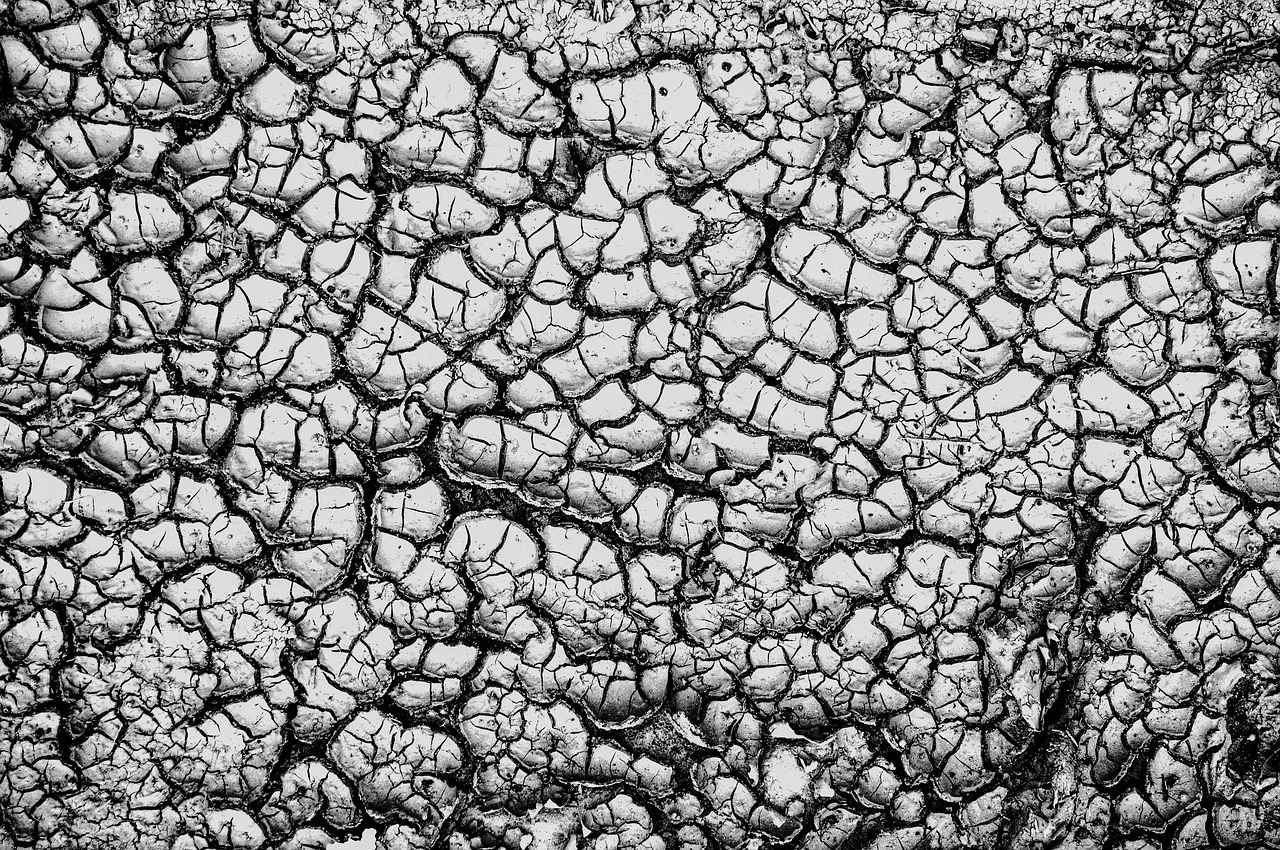
How Long to Dehydrate Jerky at 160°F
When it comes to making jerky, timing is one of the most critical factors in achieving the desired texture. At a dehydrating temperature of 160°F, the duration of dehydration can vary based on several factors, including the thickness of the meat and the type of meat being used. Understanding these variables is essential for producing jerky that is not only flavorful but also safe to consume.
Generally, the recommended dehydration times for jerky at 160°F range from 4 to 8 hours. However, this is a broad estimate, and more precise timing can be determined by considering the thickness of the meat slices. Here’s a breakdown:
| Meat Type | Thickness | Dehydration Time (Hours) |
|---|---|---|
| Beef | 1/4 inch | 4-5 |
| Beef | 1/2 inch | 6-8 |
| Pork | 1/4 inch | 4-5 |
| Pork | 1/2 inch | 6-8 |
| Turkey | 1/4 inch | 5-6 |
| Turkey | 1/2 inch | 7-9 |
It’s important to note that while the above times serve as a guideline, factors such as humidity and the specific dehydrator model can also influence the drying process. Always check your jerky periodically to avoid over-drying, which can lead to a tough texture.
To ensure that your jerky is safe to eat, it is crucial to use a food thermometer to confirm that the meat has reached an internal temperature of at least 160°F before starting the dehydration process. This step is vital for eliminating harmful bacteria.
In addition to timing, the quality of the meat plays a significant role in the final product. Lean cuts with minimal fat are ideal, as fat can lead to rancidity over time. Popular choices include top round, flank steak, and sirloin tip. Always ensure that the meat is fresh and properly stored before preparation.
In summary, achieving the perfect jerky texture requires attention to timing, meat thickness, and type. By adhering to the recommended dehydration times at 160°F and monitoring the drying process closely, you can create delicious jerky that is both safe and satisfying.
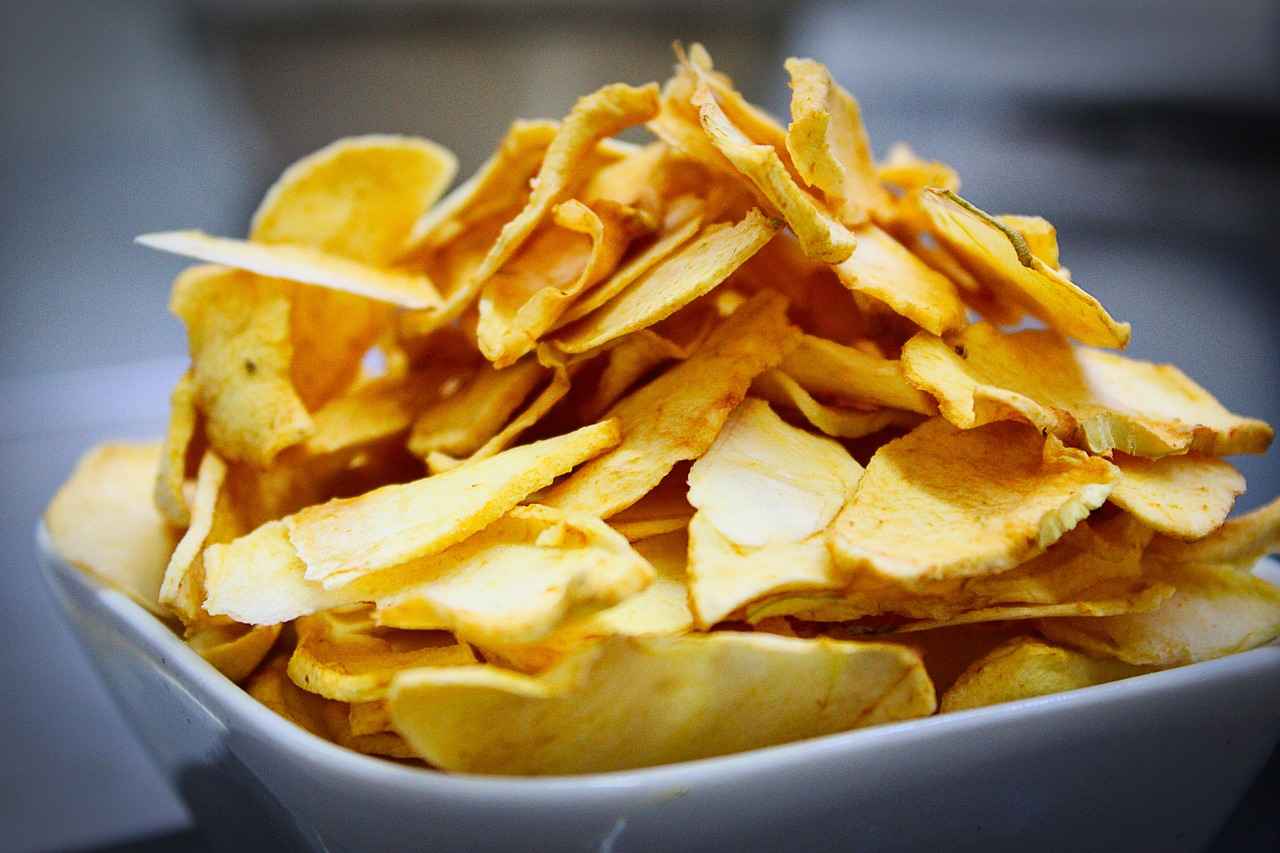
Signs Your Jerky is Done
Knowing when your jerky is adequately dehydrated is essential to achieving that perfect texture and flavor. The dehydration process can vary based on several factors, including the type of meat used, the thickness of the slices, and the specific dehydrator settings. Here are some key indicators to look for that signal your jerky is ready to be taken out of the dehydrator:
- Color Change: Properly dehydrated jerky should exhibit a deep, rich color. Depending on the type of meat and marinade used, the color can range from dark brown to reddish hues. If your jerky appears overly pale or retains a raw look, it likely needs more time in the dehydrator.
- Texture Test: The texture of the jerky is a reliable indicator of doneness. When you bend a piece of jerky, it should be pliable but not break. A good test is to bend the jerky; if it cracks but does not snap in half, it is likely done. Overly dry jerky will break easily, while under-dehydrated jerky will be too soft and chewy.
- Moisture Content: The goal of dehydrating jerky is to remove moisture effectively. To check this, you can cut a piece in half. If you see any visible moisture or if the inside feels tacky, it requires additional drying time. Properly dehydrated jerky should feel dry to the touch and have no moisture residue.
- Flavor Intensity: The flavor of your jerky should be concentrated and robust after dehydration. If the taste seems weak or diluted, it may benefit from further drying, as moisture can dilute flavors.
- Storage Test: Once you believe your jerky is done, you can conduct a simple storage test. Place a piece in an airtight container for a few hours. If condensation forms inside the container, it indicates that the jerky is not fully dehydrated and needs more time.
In summary, achieving the perfect jerky requires attention to detail and careful observation of these signs. By using these indicators, you can ensure that your jerky is not only safe to eat but also deliciously satisfying. Remember, the art of jerky-making is as much about the process as it is about enjoying the end product. Happy dehydrating!
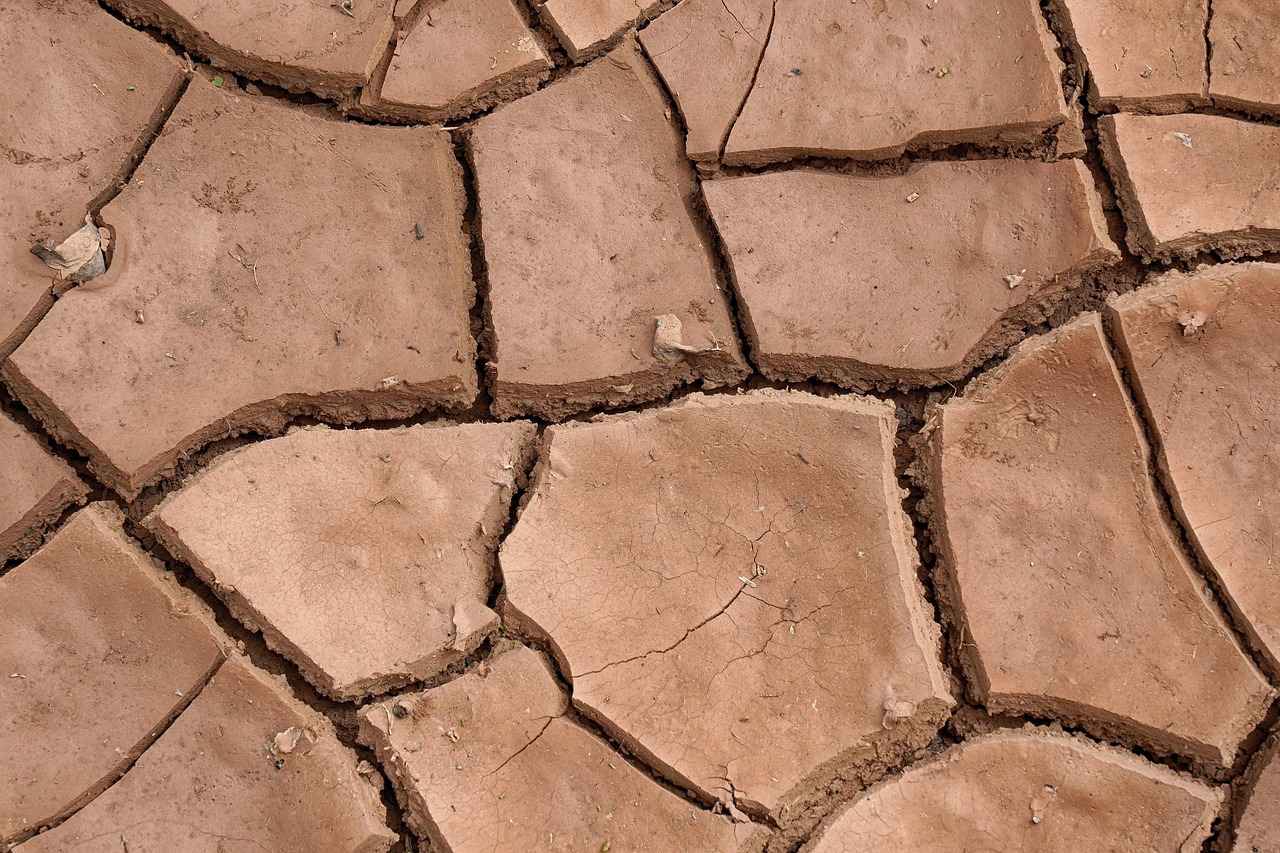
Storage Tips for Dehydrated Jerky
Proper storage is essential for extending the shelf life of your homemade jerky. When jerky is stored correctly, it not only maintains its flavor but also preserves its texture, ensuring that every bite is as satisfying as the first. Here, we will explore the best practices for storing your dehydrated jerky to keep it fresh and delicious for as long as possible.
- Choose the Right Container: Selecting the appropriate storage container is crucial. Airtight containers, such as vacuum-sealed bags or glass jars with tight-fitting lids, are ideal for keeping moisture out. Avoid using regular plastic bags, as they can allow air to enter and cause the jerky to spoil faster.
- Cool and Dark Storage: Store your jerky in a cool, dark place to prevent exposure to light and heat, which can degrade its quality. A pantry or cupboard is usually a good choice. If you live in a particularly warm climate, consider refrigerating or freezing your jerky to extend its shelf life even further.
- Label and Date: Always label your containers with the date of preparation. This practice helps you keep track of how long the jerky has been stored. Generally, properly stored jerky can last up to 1-2 months at room temperature, but refrigeration can extend this time to 6 months or more.
- Check for Moisture: Before sealing your jerky, ensure it is completely dry. Any remaining moisture can lead to mold growth and spoilage. If you notice any signs of moisture in your storage container, remove the jerky and re-dehydrate it before storing again.
- Consider Portioning: If you plan to consume your jerky over an extended period, consider portioning it into smaller bags. This way, you only open what you need, minimizing exposure to air and moisture for the remaining jerky.
By following these storage tips, you can enjoy your dehydrated jerky at its best for an extended period. Proper storage not only enhances the longevity of your jerky but also ensures that it retains its robust flavors and satisfying chewiness. Whether you’re making jerky for a hiking trip, a snack, or a gift, taking the time to store it correctly will enhance your overall experience.
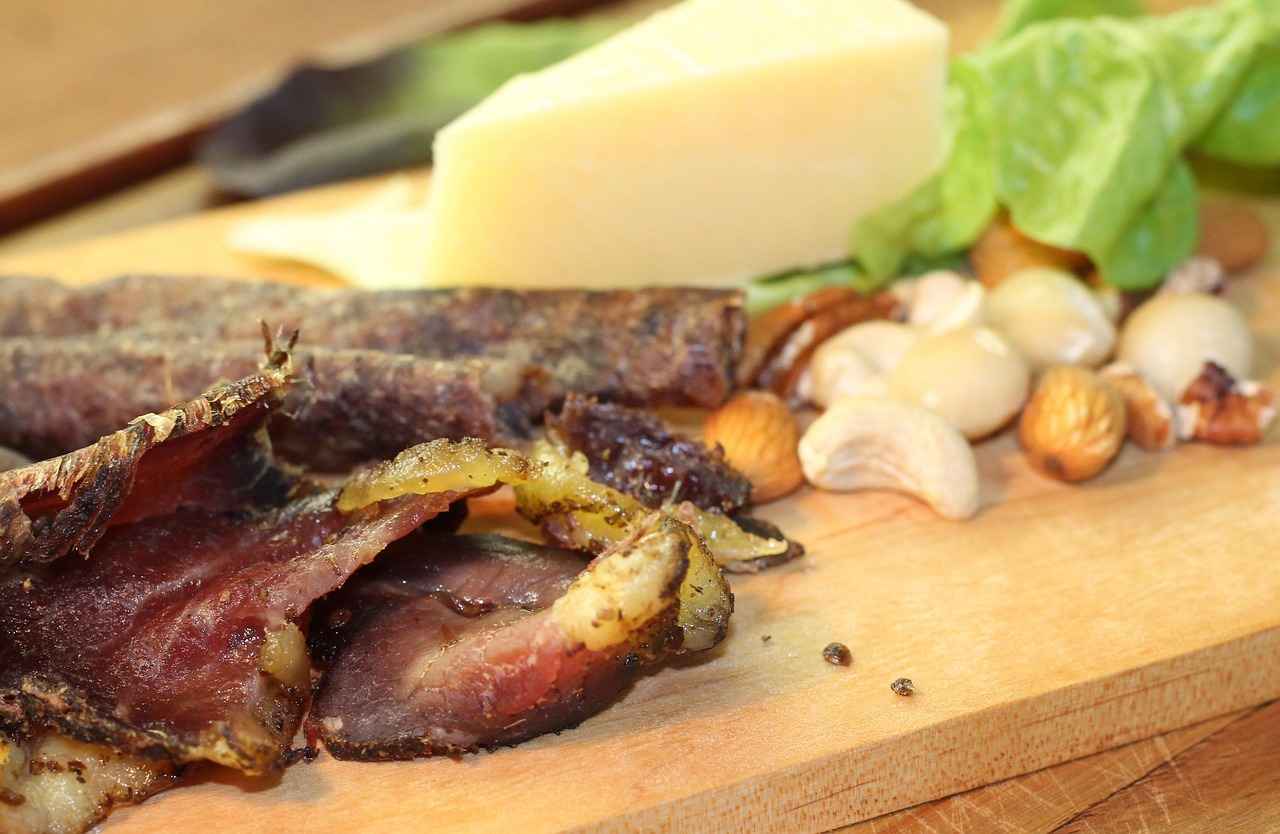
Common Mistakes to Avoid When Dehydrating Jerky
Creating delicious jerky can be a rewarding experience, but it also comes with its challenges. Avoiding common mistakes can significantly enhance the quality and safety of your jerky. Below, we will explore frequent pitfalls that home jerky makers encounter and provide practical tips on how to avoid them.
- Inconsistent Thickness: One of the most common mistakes is cutting the meat into uneven pieces. This inconsistency leads to uneven drying, where some pieces become over-dried while others remain chewy or even unsafe. To avoid this, use a sharp knife and aim for uniform slices, ideally about 1/4 inch thick.
- Ignoring Temperature Guidelines: Dehydrating jerky at the wrong temperature can compromise both texture and safety. Always ensure that your dehydrator is set to at least 160°F to kill harmful bacteria. Investing in a reliable thermometer can help monitor the temperature accurately.
- Skipping the Marinade: While some may prefer unseasoned jerky, skipping the marinade altogether can lead to bland results. A good marinade not only adds flavor but can also enhance the tenderness of the meat. Aim for a marinating period of at least 4 hours, or overnight for deeper flavor penetration.
- Piling Up the Meat: Overloading your dehydrator can hinder airflow, resulting in uneven drying. Make sure to space out the meat slices adequately, allowing for proper air circulation. If necessary, dehydrate in batches to achieve the best results.
- Not Checking for Doneness: Relying solely on time can lead to under-dried or over-dried jerky. It’s crucial to check for signs of doneness, such as a leathery texture and a slight bend without breaking. Using a food dehydrator with a built-in timer and temperature control can help, but always verify the jerky’s readiness manually.
- Improper Storage: Once your jerky is dried, improper storage can lead to spoilage. Store your jerky in airtight containers or vacuum-sealed bags to keep it fresh. Avoid exposure to moisture and heat, which can hasten spoilage and compromise flavor.
- Neglecting Cleanliness: Food safety cannot be overstated. Always ensure that your workspace, tools, and dehydrator are clean before starting the jerky-making process. This practice minimizes the risk of contamination and ensures a safe, enjoyable product.
By being aware of these common mistakes and implementing the suggested strategies, you can enhance your jerky-making experience. Remember, practice makes perfect, and with each batch, you’ll refine your technique and develop your unique flavor profiles.
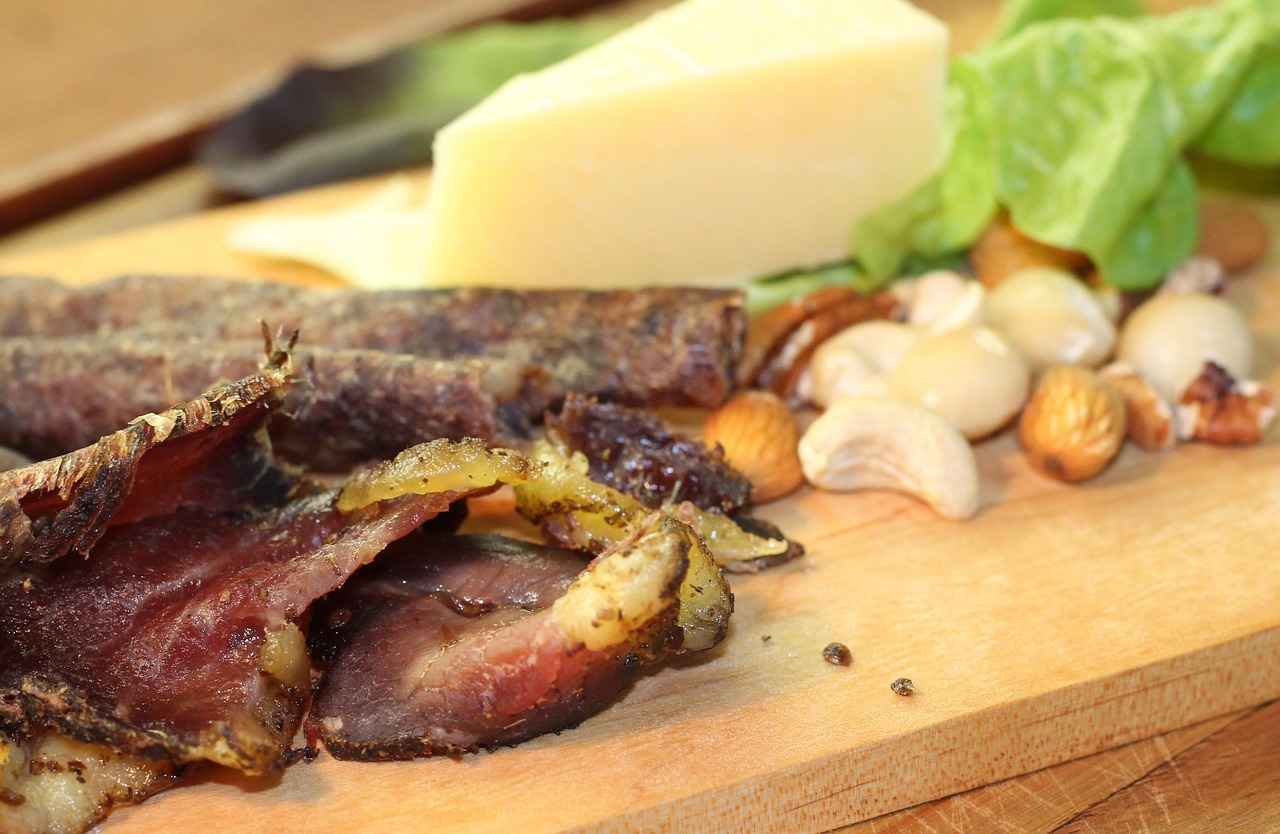
Health and Safety Considerations
Food safety is a critical aspect of making jerky, as improper handling and dehydration can lead to foodborne illnesses. Understanding the health considerations involved in jerky preparation is essential for ensuring that your homemade jerky is both delicious and safe to eat.
- Safe Handling Practices: Always start with clean hands and sanitized surfaces. Before handling meat, wash your hands with soap and warm water for at least 20 seconds. Use separate cutting boards for meat and vegetables to avoid cross-contamination. Ensure that all utensils and equipment used in the jerky-making process are thoroughly cleaned and sanitized.
- Choosing Quality Meat: Select fresh, high-quality meat from a reputable source. Look for lean cuts, as fat can lead to rancidity and spoilage. Popular choices include beef, turkey, and venison. Always check for any signs of spoilage, such as an off smell or discoloration.
- Temperature Control: Maintaining the correct temperature during dehydration is vital for food safety. The USDA recommends dehydrating meat at a minimum temperature of 160°F (71°C) to effectively kill harmful bacteria, including Salmonella and E. coli. Using a food thermometer can help ensure that the meat reaches this critical temperature throughout the drying process.
- Dehydration Time: The time required to dehydrate jerky can vary based on the thickness of the meat slices and the type of dehydrator used. Typically, jerky should be dehydrated for 4 to 8 hours at 160°F. Ensure that you periodically check the texture of the jerky to avoid over-drying, which can lead to a tough final product.
- Marinating Safely: If you choose to marinate your meat, do so in the refrigerator rather than at room temperature. This helps prevent the growth of harmful bacteria. Use acid-based marinades, such as those containing vinegar or citrus juice, as they can help inhibit bacterial growth.
- Storage Guidelines: Once your jerky is fully dehydrated, store it in airtight containers or vacuum-sealed bags to prolong its shelf life. Keep the jerky in a cool, dark place, and consume it within one to two months for the best flavor and quality. For longer storage, consider freezing the jerky.
In summary, prioritizing health and safety when making jerky is essential for producing a safe and enjoyable product. By adhering to safe handling practices, controlling temperatures, and ensuring proper storage, you can enjoy delicious homemade jerky without compromising your health. Always remain vigilant about food safety to make your jerky-making experience both enjoyable and risk-free.
Frequently Asked Questions
- How long does it take to dehydrate jerky at 160°F?
Typically, it takes about 4 to 6 hours to dehydrate jerky at 160°F, depending on the thickness of the meat. Thicker slices may require a bit more time, so keep an eye on your jerky for that perfect texture!
- What types of meat are best for making jerky?
Lean cuts of meat work best for jerky. Some popular choices include beef, turkey, and venison. Just remember, the leaner the meat, the better your jerky will turn out!
- Do I need to marinate my meat before dehydrating it?
While marinating is optional, it can significantly enhance the flavor of your jerky. A good marinade can add a burst of flavor that makes your jerky unforgettable!
- How can I tell when my jerky is done?
Your jerky is done when it bends and cracks but doesn’t break apart. It should be dry to the touch and have a leathery texture. Trust your instincts; it’s all about that perfect bite!
- What are some common mistakes to avoid when making jerky?
Avoid cutting your meat too thick, not maintaining the right temperature, and overloading your dehydrator. These mistakes can lead to uneven drying and less than ideal jerky!


